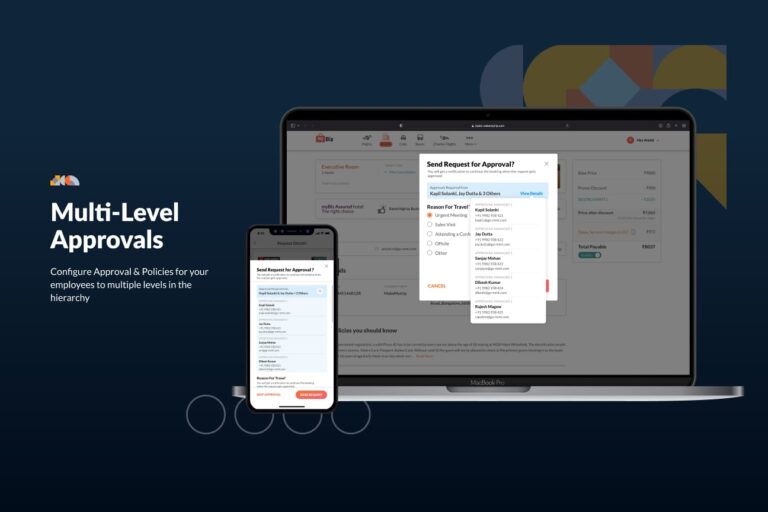
The world is more connected than ever. From the coffee you drink in the morning to the phone in your pocket, products pass through many hands before they get to you. And while this global network of trade and logistics makes life more convenient, it also brings risks that businesses need to manage. This is where supply chain risk management comes in.
If you’re new to this concept, it may sound complicated, but at its core, it’s about being able to navigate uncertainty, keep operations running, and deliver value to customers like you.
Every business, big or small, has a supply chain, and managing risks within it is key to survival and success. Let’s break it down so you can understand how supply chain risk management works and why it matters.
Here are five things to help you understand and get your head around supply chain risk management.
1. Supply Chain Risks Are Inevitable
Before we get into managing these risks, let’s first understand why they exist.
A supply chain has multiple stages–from sourcing raw materials to production, shipping, and distribution–each of which can be disrupted. Think of it like a chain where each link is a critical part of the process. If one link breaks, the whole chain snaps, and you’re in for delays and losses.
Some risks are external and unpredictable. For example, natural disasters, pandemics, and political instability. Others are internal, such as operational inefficiencies or quality control issues.
Imagine a factory that shut down due to a labor strike. Or a key supplier that can’t deliver because of financial problems. These events create ripples that impact product availability, delivery times, and even the prices you see on the shelf.
Accepting that these risks exist and that you need a plan for them is the first step to building a resilient supply chain.
2. Identifying Vulnerabilities Before They Become Disasters
Supply chain risk management starts with awareness. You need to know where the vulnerabilities are. This process is called risk assessment. It’s like taking inventory of all the potential threats that could knock your operations off track.
You don’t have to be a big business to benefit from finding risks. Small businesses should assess their suppliers, transportation networks, and distribution channels. For example, does your business rely on a single supplier for a critical component? If so, that’s a huge risk if that supplier is disrupted. Diversifying suppliers or finding alternatives can reduce that vulnerability.
And technology is a big part of modern supply chains. Cyber supply chain risk management threats like hacking and data breaches are more common as businesses become more digital. Protecting data, securing communication channels, and training employees to avoid phishing attacks, are all part of the risk management arsenal.
It’s about thinking of what could go wrong and putting measures in place to prevent it.
3. The Human Element: Building Strong Relationships
Despite all the advanced technologies, supply chain management is about people. Your relationships with suppliers, logistics partners, and customers will make or break your success. Think of that sweet little local restaurant–they don’t run out of anything because they keep good relations with their suppliers. You should too.
Regular communication is the foundation of strong supplier relationships. This means more than just sending purchase orders and paying invoices. Schedule quarterly business reviews to discuss performance, challenges, and opportunities. Open channels for feedback and improvement suggestions. When problems arise – and they will – deal with them promptly and professionally.
4. Contingency Planning
One of the most important parts of supply chain risk management is preparing for the unknown. You’ve probably heard the saying, “Expect the best, but prepare for the worst.” This applies perfectly to supply chains. If you have contingency plans–alternative strategies for dealing with disruptions–you are much better placed to stay stable during a crisis.
Think of a contingency plan as a safety net. It could be a backup inventory, a diversified supplier base, or alternative shipping routes. For example, if you ship through a specific port that gets closed due to weather conditions, having a pre-planned alternative route can prevent delays.
These plans don’t stop at logistics. Companies should also consider financial contingencies. For example, what would you do if a supplier increases their price suddenly? Would you absorb the cost, raise prices, or find a cheaper alternative? When you create these “what if” scenarios, you ensure you have actionable responses that prevent panic and minimize damage when the unexpected happens.
5. The Human Element: Why People Matter Most
We often think of supply chains as systems–just processes and logistics. But at the heart of every supply chain is people. From the factory workers to the truck drivers, managers, and everyone in between, people keep everything running. When managing supply chain risks, you must never forget this human factor.
Training, communication, and collaboration between team members are vital. Employees need to know how to handle crises and adapt quickly when things go wrong. This agility is often the difference between a minor blip and a major disruption.
A business that invests in its people–and gives them the skills, tools, and support their need–will always come out strong in tough times.
Conclusion
Supply chain risk management may sound like a technical business concept. However, it’s not. It’s about ensuring the products and services you rely on are always available no matter what happens. By understanding the risks, nurturing relationships, planning for the unexpected, and valuing the human element, you can navigate the unknown.
So, when you buy from a business that manages its supply chain well, you get more reliability, lower prices, and the knowledge that no matter what happens, they’ve got you sorted.
Write and Win: Participate in Creative writing Contest & International Essay Contest and win fabulous prizes.


